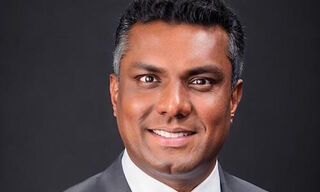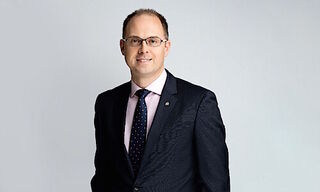Credit Suisse will soon face important strategic decisions, according to media reports, but Chairman António Horta-Osório won't put the bank on the blocks, sources have told finews.asia. Here is where he needs to make a start.
1. Sale? Out Of The Question!
A sale to a foreign buyer is frequently touted among Swiss lender's options: its 23.8 billion Swiss franc ($25.9 billion) market value is a bargain. The scenario is considered out of the question in Credit Suisse's C-suite, a person familiar with the matter told finews.asia, and CEO Thomas Gottstein has in the past argued the obstacles preventing a cross-border deal (absorb management resources inordinately, require enormous amounts of time and effort to clinch licenses for a united entity in key financial centers, talent drain, and infrastructure and technology merger nightmare).
Credit Suisse insiders also note that António Horta-Osório hardly joined the Zurich-based bank in order to turn around and orchestrate its sale – instead, he is signaling his desire to change it from the inside out.
2. Less Investment Bank, More Share Price
One of Credit Suisse’s most pressing problems is its vulnerability. With a share price 50 percent of its book value, the bank is attractive to predators. To raise the share price and the bank’s ability to repel boarders, Horta-Osório has to start with the investment bank. That means Credit Suisse has to give up on its ambitions in the Global Markets division, i.e. on trading in all kinds of instruments and focus the investment bank on collaborating with wealth management.
J.P. Morgan analysts recently cited trading in fixed-income products as weakening Credit Suisse. This business was volatile, absorbed too much capital and had hardly any synergies with private banking.
It remains questionable whether there is a quick solution to the Global Markets problem. The rapid unwinding of trading positions would inevitably lead to writedowns and another major round of job cuts.
3. Investment Banking as Supplier?
If Credit Suisse’s future lies mainly in wealth management then one unit within the investment bank could have a significant role, Global Trading Solutions.
This product and service unit emerged just over a year ago from a merger between International Trading Solutions and the relevant activities in the Asia-Pacific region and acts as a strong interface between the investment bank and the private bank’s wealthy customers.
GTS accounted for 18 percent of the investment bank’s revenues and grew 31 percent in 2020, according to J.P. Morgan analysts. They added that the revenues generated in wealth management through collaboration with GTS rose 34 percent.
When Horta-Osorio told his investment bankers they would provide outstanding ancillary services for wealth management, he probably meant GTS.
4. «Accelerate» In Wealth Unit
The Swiss bank looks poised to merge two or even three private banks: an Asia-focused business, a Swiss-based one, and a unit for everything else. An unwinding of ex-CEO Tidjane Thiam’s 2015 strategy, this would shift 630 private bankers in Asia with 1,140 in the wider, international unit, the crown jewel. It is also likely the forerunner of Credit Suisse’s own «Accelerate,» UBS’ landmark 2012 restructuring to center itself around its private bank and to return the bulk of profits to investors.
5. Asset Management, A Movable Feast
Since March Credit Suisse Asset Management has become what it was for many years within the bank, a source of turbulence. After the debacle with the closed Greensill funds, which is still not over, the bank has managed it as a separate division. Credit Suisse veteran Ulrich Körner represents it in the top management team.
From this position many possibilities are open to Horta-Osório: A sale of the unit, which is too small with assets under management of over 400 billion francs, could provide funds for expansion elsewhere. Various scenarios are possible here and it would offer the chance of a clean break. A merger with another asset manager would at least solve the problem of critical mass, but there would be management issues.
If Horta-Osório were to expand wealth management to the investment bank’s benefit then expanding the funds business would also be an option, the lines between asset management and private banking are becoming increasingly blurred in any case. A complete revamp of the range of funds would then be needed, and alternative investments were what caused too many expensive failures at CSAM for it to be able to carry on.
6. More Swiss Credit Suisse
The alpine nation of course looms large in Credit Suisse's heritage and its DNA – but also its future. The Swiss regulator has made clear that a foreign buyer for Credit Suisse would no longer be free to peddle «Swiss» as part of its name, a source familiar with the matter told finews.com. For a standalone Credit Suisse, the Swiss brand needs to be more than a veneer: the bank needs to exude reliability, stability, quality, and competence.
It can only do so if culture – and control – are centralized in Zurich and trickled through the organization. This inevitably means an end to the culture of assorted silos and especially a split from the fabled CSFB culture, which still sits deep. A stronger «Suisse» would do well in Asia, where Helvetic qualities have pull, in particular.
7. Relearning How to Deal with Risk
Credit Suisse aspires to be the «entrepreneur’s bank», a motto etched into the minds of frontline staff. Some of them often see themselves as «intrapreneurs» and often act on their own initiative, which created great careers but also major setbacks. The twin disasters of Archegos and Greensill make it clear that this culture has to be re-examined.
Horta-Osório showed at U.K.-based bank Lloyds that he is good at bringing about a change of mentality in the staff. «I was brought up to serve others» is one of his mottos which could stand for a Credit Suisse which puts customers rather than a quick deal first.
That sort of culture would also help with compliance in an area of the bank where no stone should be left unturned. The Greensill affair shows that warning signs were overlooked or interpreted differently by various divisions. A risk-avoidance system can only be effective if it works systematically, supports whistleblowers, directly involves the board and draws up clear lines of responsibility.



























